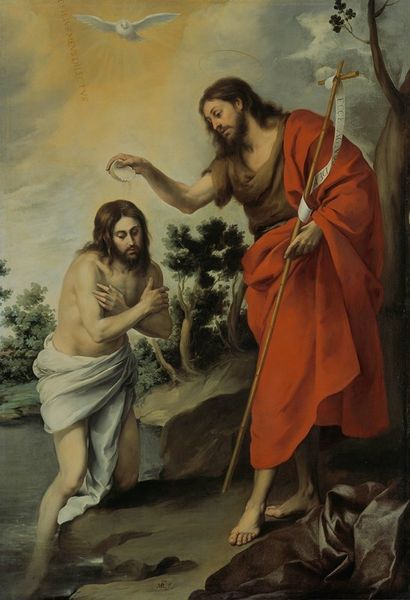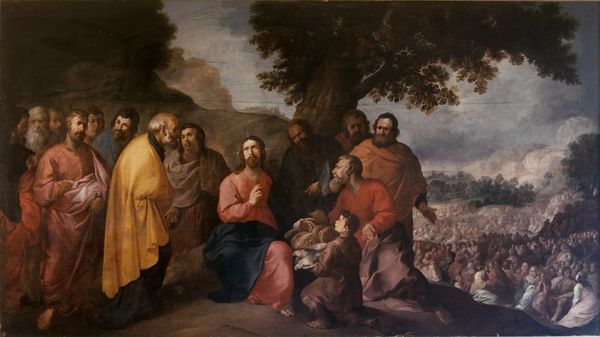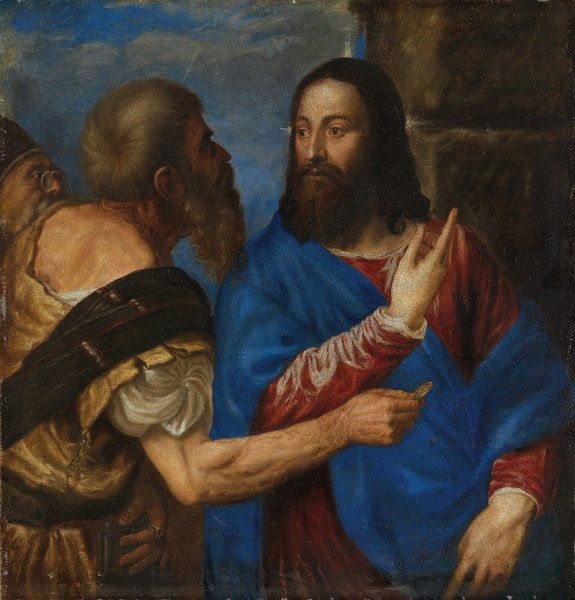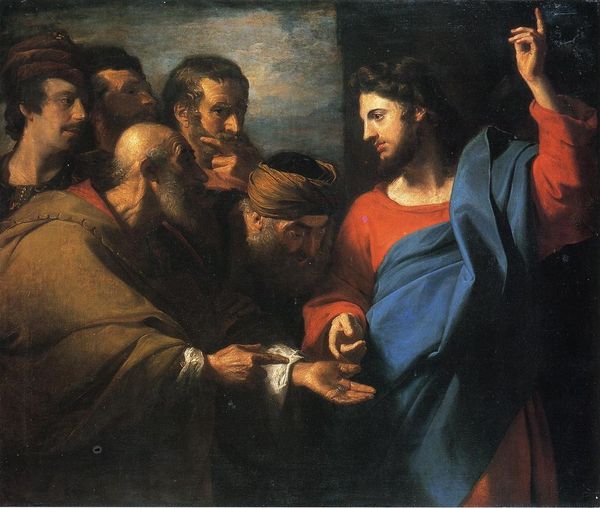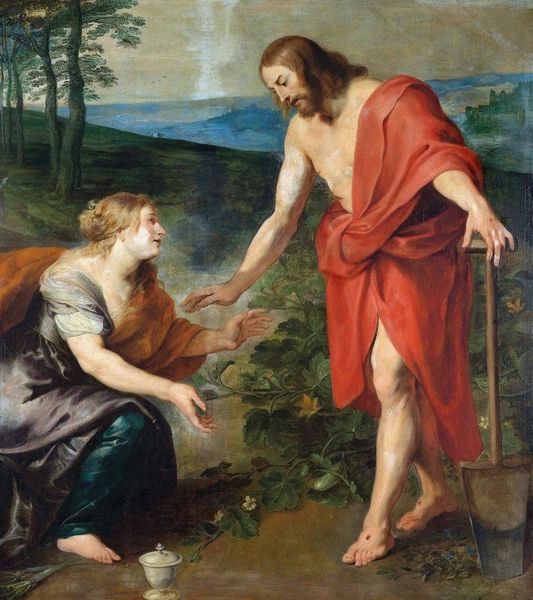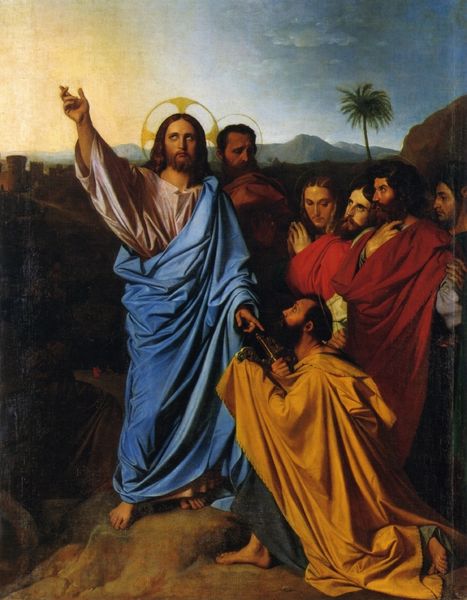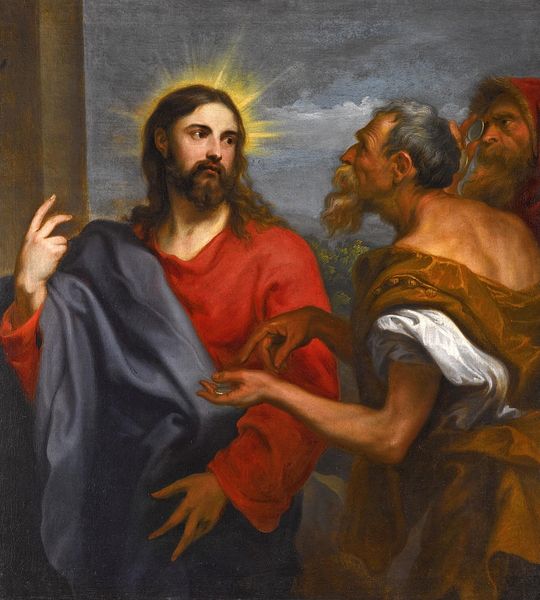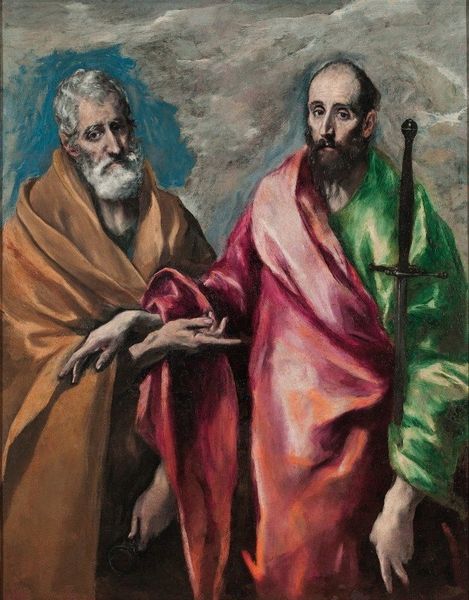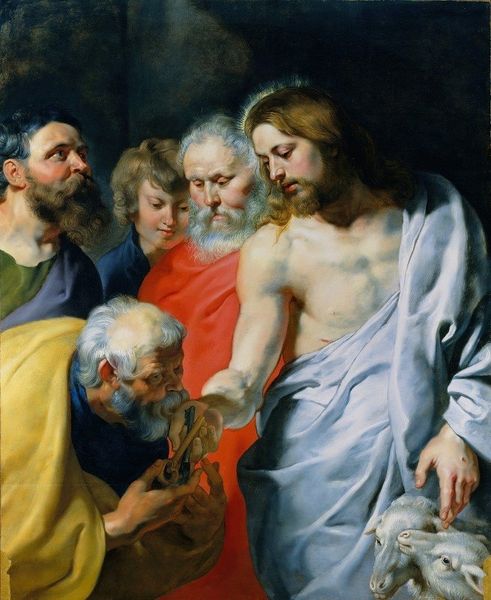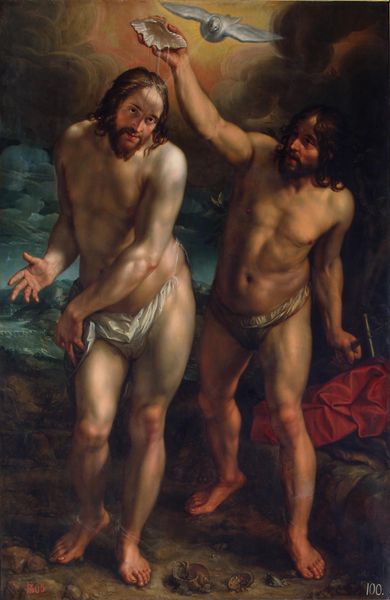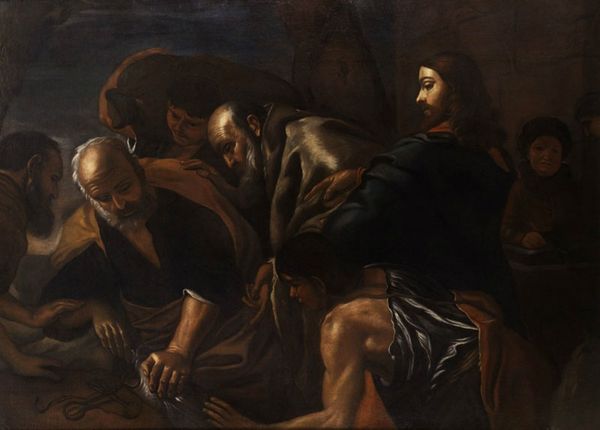
painting, oil-paint
#
portrait
#
baroque
#
painting
#
oil-paint
#
figuration
#
oil painting
#
history-painting
#
portrait art
Copyright: Public Domain: Artvee
Editor: Here we have Bartolomé Estebán Murillo’s “Saint John the Baptist Pointing to Christ,” an oil painting from around 1655. I find it interesting how the composition is split vertically, almost like a diptych. What can you tell us about this piece? Curator: This work reflects the visual culture of its time and place. Murillo was highly favored by the Church and wealthy patrons in Seville. Note how the Counter-Reformation emphasis on religious figures as relatable, human individuals is manifested here. Editor: Relatable? With angels and inscribed banners floating above? Curator: Think about the politics of imagery. Post-Reformation, the Catholic Church aimed to regain influence. Presenting Christ and John as physically present, as men among us, rather than distant, divine figures, would have served to make religious doctrine more accessible. Editor: That makes sense. And Seville's economic state probably influenced that too, right? Murillo made other paintings portraying the poor. Curator: Exactly. Seville was a major port; its wealth intertwined with global trade and religious institutions. How did this environment potentially influence the commissioning and reception of religious art like this? Consider who had access to art and what messages those artworks conveyed within that societal structure. Editor: I guess seeing these familiar biblical stories set against the backdrop of their lives made the message that much more persuasive. I hadn't thought about the economics tied into religious accessibility quite that way. Thanks! Curator: Precisely! Analyzing the painting's place within Seville’s complex socio-economic framework reveals deeper layers of meaning beyond the purely religious narrative. A good reminder of art’s potent social function.
Comments
No comments
Be the first to comment and join the conversation on the ultimate creative platform.
